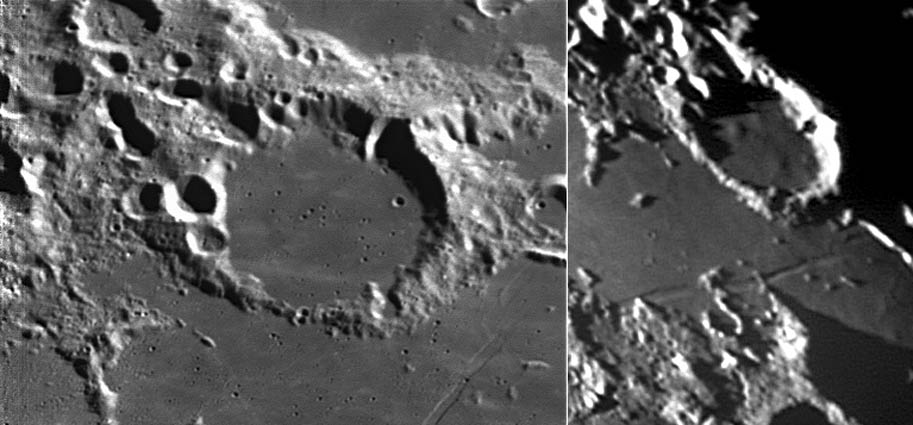Difference between revisions of "February 11, 2005"
| (6 intermediate revisions by the same user not shown) | |||
| Line 1: | Line 1: | ||
__NOTOC__ | __NOTOC__ | ||
=Seeing Double at Capuanus= | =Seeing Double at Capuanus= | ||
| + | <!-- Start of content --> | ||
<table width="85%" border="0" align="center" cellpadding="6" cellspacing="2"> | <table width="85%" border="0" align="center" cellpadding="6" cellspacing="2"> | ||
<tr> | <tr> | ||
| Line 12: | Line 13: | ||
</table> | </table> | ||
<table width="80%" border="0" align="center" cellpadding="8"> | <table width="80%" border="0" align="center" cellpadding="8"> | ||
| − | <tr><td><div align="center" class="main_sm">Image Credit: [mailto:starman2@charter.net Wes Higgins (left) ] and [mailto:kcpaulhk@yahoo.com.hk K.C. Pau (right) ]</p> | + | <tr><td><div align="center" class="main_sm"><p>Image Credit: [mailto:starman2@charter.net Wes Higgins (left) ] and [mailto:kcpaulhk@yahoo.com.hk K.C. Pau (right) ]</p> |
</div></td> | </div></td> | ||
</tr> | </tr> | ||
| Line 21: | Line 22: | ||
<p align="left">Here are two images of the 60 km wide crater Capuanus in Palus Epidemiarum. Although they differ in scale, resolution and lighting, both are valuable in increasing understanding of this piece of the lunar surface. KC’s low Sun view reveals the three or four known but difficult to image domes that formed when mare lava erupted onto the floor of Capuanus. Wes’ high resolution image provides a new level of documentation of the subsequent modification of the floor by impact cratering and delicate ray draping. Comparing the two images shows that the domes are almost completely undetectable at high Sun, but that for the two largest domes very, very subtle rises are hinted at, possibly with summit craters. A rectification, rescaling and co-alignment of the two images is absolutely necessary, however, to test this speculative matching. And comparisons with other images too! </p> | <p align="left">Here are two images of the 60 km wide crater Capuanus in Palus Epidemiarum. Although they differ in scale, resolution and lighting, both are valuable in increasing understanding of this piece of the lunar surface. KC’s low Sun view reveals the three or four known but difficult to image domes that formed when mare lava erupted onto the floor of Capuanus. Wes’ high resolution image provides a new level of documentation of the subsequent modification of the floor by impact cratering and delicate ray draping. Comparing the two images shows that the domes are almost completely undetectable at high Sun, but that for the two largest domes very, very subtle rises are hinted at, possibly with summit craters. A rectification, rescaling and co-alignment of the two images is absolutely necessary, however, to test this speculative matching. And comparisons with other images too! </p> | ||
<blockquote> | <blockquote> | ||
| − | <p align="right">— [mailto:tychocrater@yahoo.com Chuck Wood]</blockquote> | + | <p align="right">— [mailto:tychocrater@yahoo.com Chuck Wood]</p></blockquote> |
<p align="left"><b>Technical Details:</b><br> | <p align="left"><b>Technical Details:</b><br> | ||
Left (Higgins): Nov 5, 2004. 18" Starmaster DMK-21F04 Firewire Camera.<p> | Left (Higgins): Nov 5, 2004. 18" Starmaster DMK-21F04 Firewire Camera.<p> | ||
| Line 28: | Line 29: | ||
<p><b>Related Links:</b><br> | <p><b>Related Links:</b><br> | ||
Rukl Plate 63 | Rukl Plate 63 | ||
| − | <p | + | </p> |
| + | <p><b>Yesterday's LPOD:</b> [[February 10, 2005|Peaky Piton]] </p> | ||
| + | <p><b>Tomorrow's LPOD:</b> [[February 12, 2005|Baby Moon]] </p> | ||
</tr> | </tr> | ||
</table> | </table> | ||
| Line 39: | Line 42: | ||
<p align="center" class="main_titles"><b>Author & Editor:</b><br> | <p align="center" class="main_titles"><b>Author & Editor:</b><br> | ||
[mailto:tychocrater@yahoo.com Charles A. Wood]</p> | [mailto:tychocrater@yahoo.com Charles A. Wood]</p> | ||
| − | < | + | <!-- Cleanup of credits --> |
| − | + | <!-- Cleanup of credits --> | |
| − | < | + | <!-- Cleanup of credits --> |
| − | + | <!-- Cleanup of credits --> | |
| − | + | <!-- Cleanup of credits --> | |
| − | < | + | <!-- Cleanup of credits --> |
| − | < | + | <!-- Cleanup of credits --> |
| − | + | <!-- Cleanup of credits --> | |
| − | < | + | <!-- Cleanup of credits --> |
| − | + | <!-- Cleanup of credits --> | |
</td></tr> | </td></tr> | ||
</table> | </table> | ||
<p> </p> | <p> </p> | ||
| − | ---- | + | <!-- End of content --> |
| − | + | {{wiki/ArticleFooter}} | |
| − | |||
Latest revision as of 14:10, 15 March 2015
Seeing Double at Capuanus
Image Credit: Wes Higgins (left) and K.C. Pau (right) |
|
Seeing Double at Capuanus Here are two images of the 60 km wide crater Capuanus in Palus Epidemiarum. Although they differ in scale, resolution and lighting, both are valuable in increasing understanding of this piece of the lunar surface. KC’s low Sun view reveals the three or four known but difficult to image domes that formed when mare lava erupted onto the floor of Capuanus. Wes’ high resolution image provides a new level of documentation of the subsequent modification of the floor by impact cratering and delicate ray draping. Comparing the two images shows that the domes are almost completely undetectable at high Sun, but that for the two largest domes very, very subtle rises are hinted at, possibly with summit craters. A rectification, rescaling and co-alignment of the two images is absolutely necessary, however, to test this speculative matching. And comparisons with other images too! Technical Details: Right (Pau): Oct 23, 2004, 12h15m (UT). 10" f/6 Newtonian + 20mm eyepiece + Philips Toucam Pro Related Links: Yesterday's LPOD: Peaky Piton Tomorrow's LPOD: Baby Moon |
|
Author & Editor: |
COMMENTS?
Register, Log in, and join in the comments.




